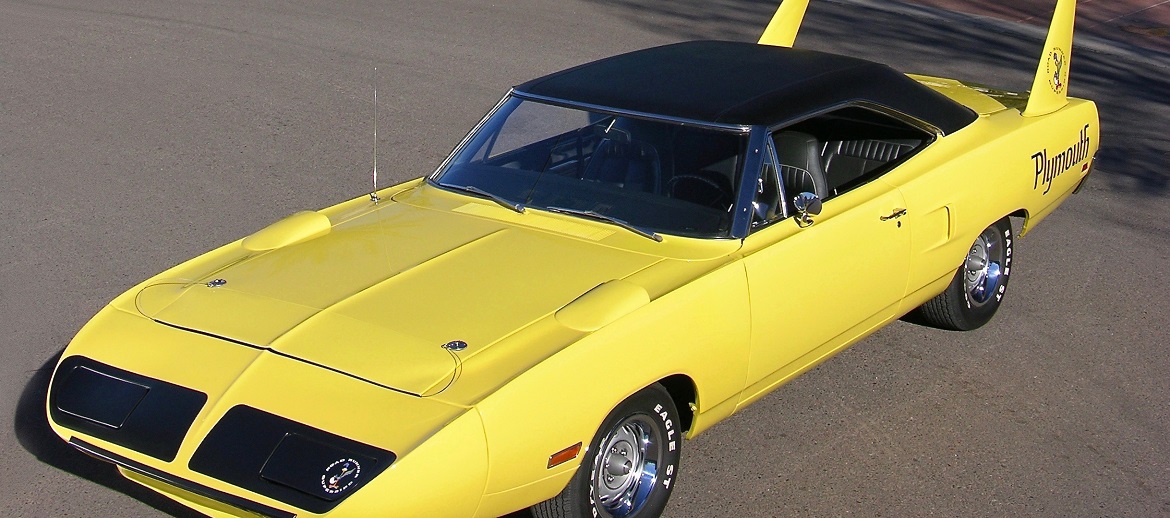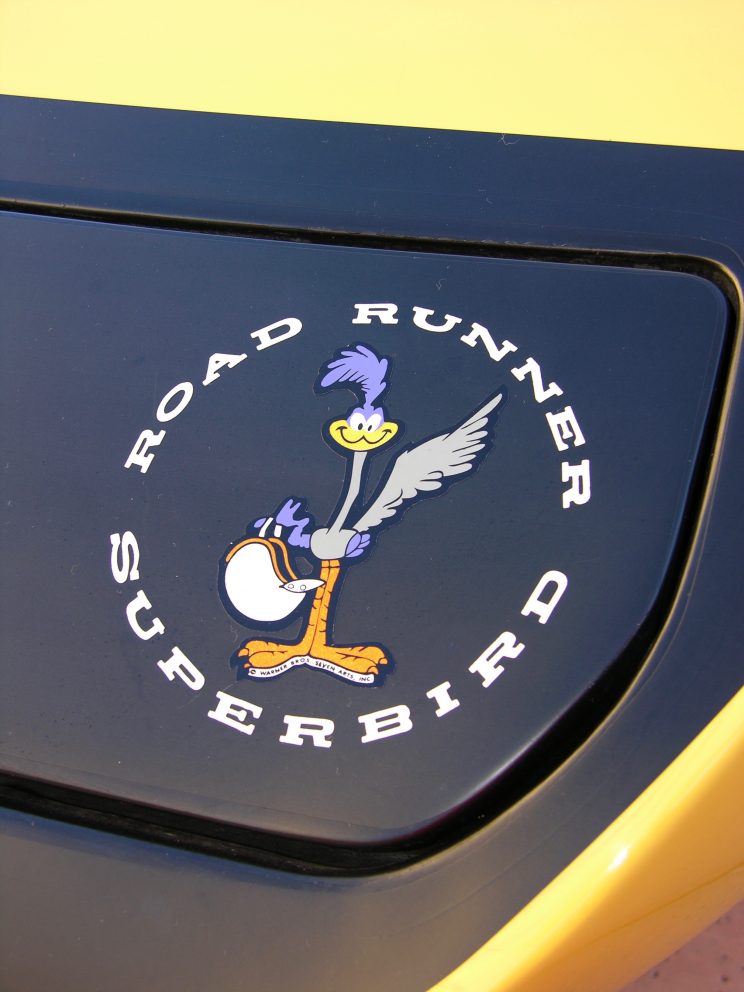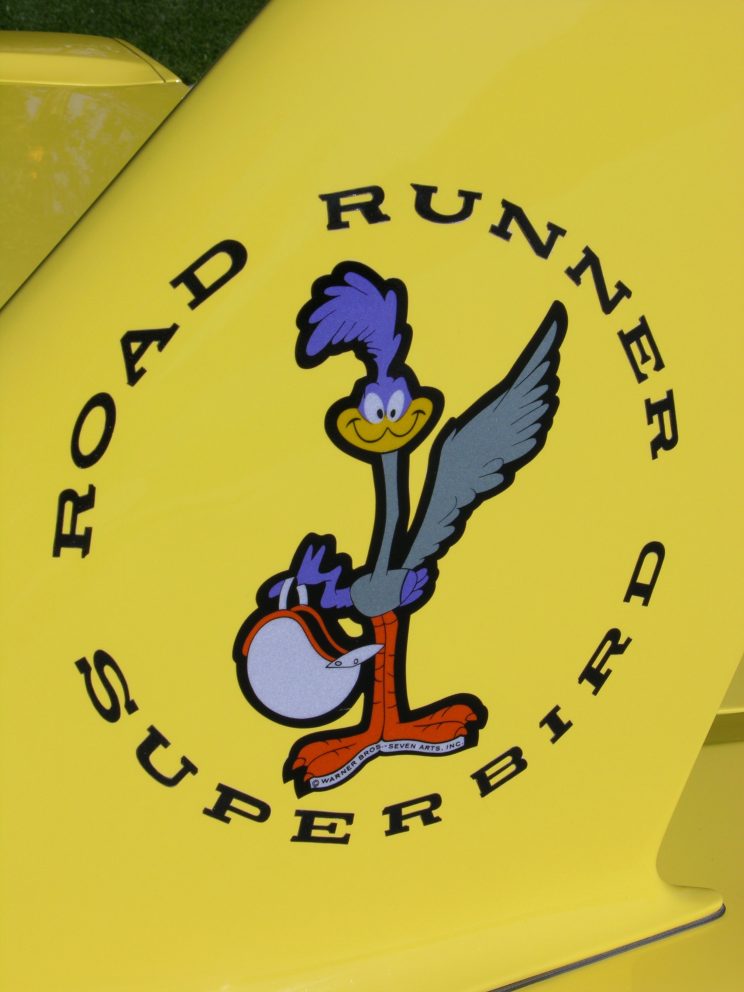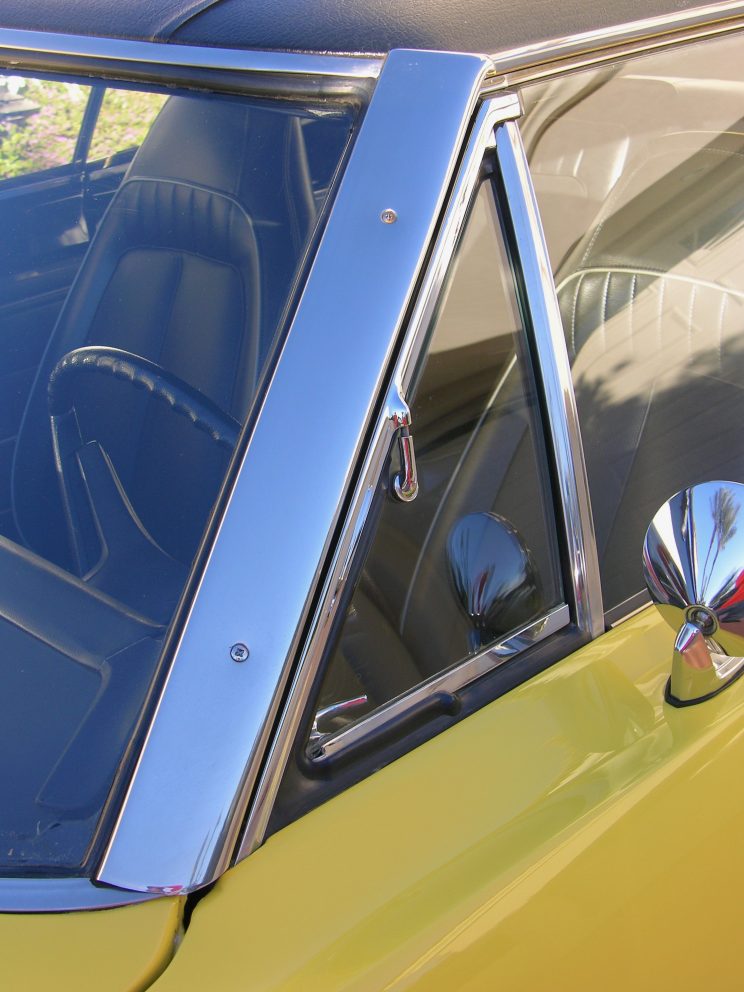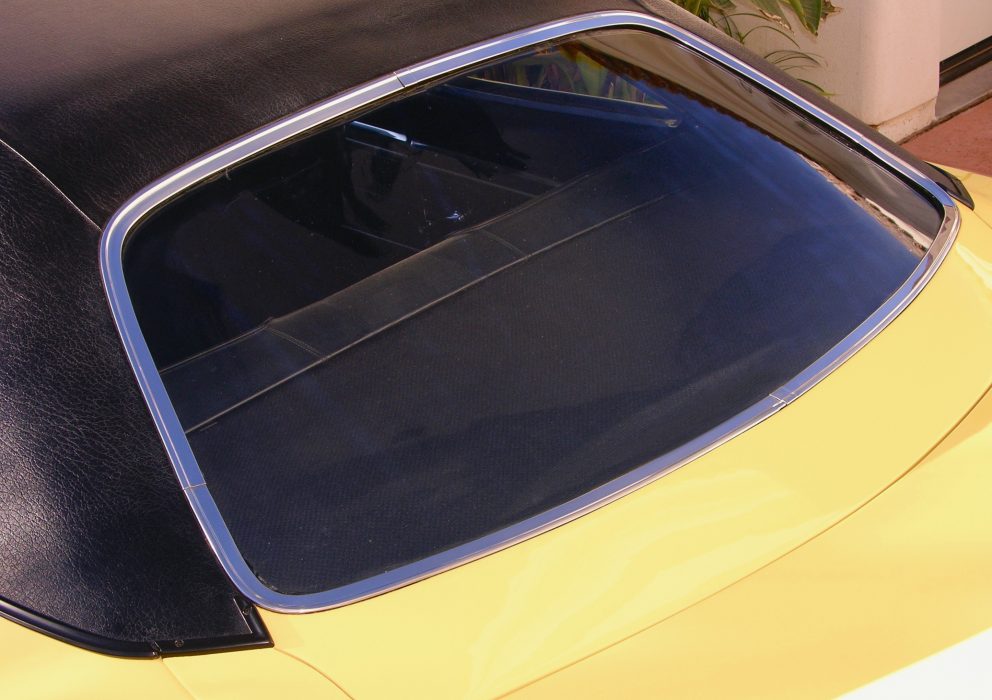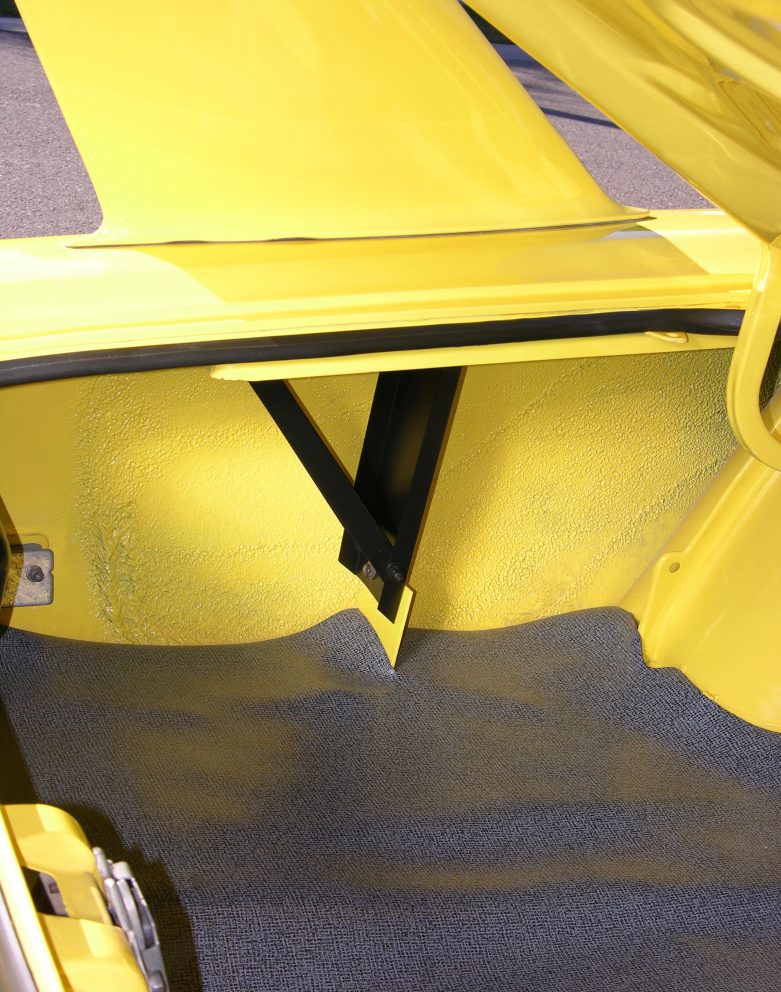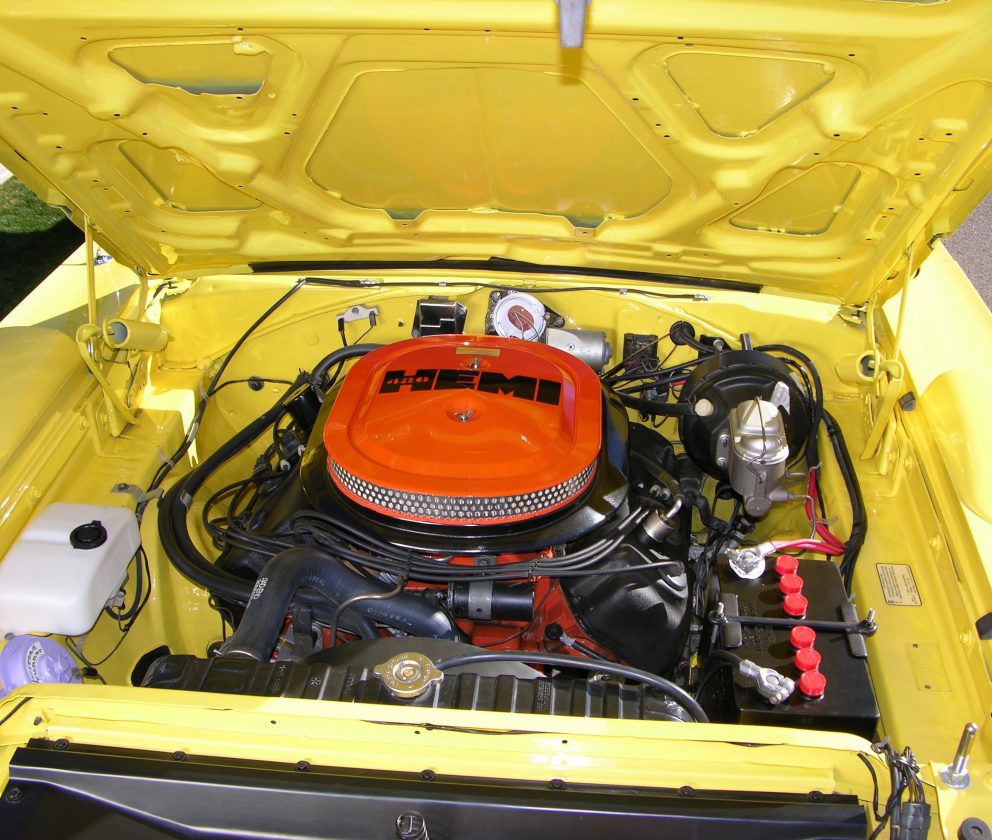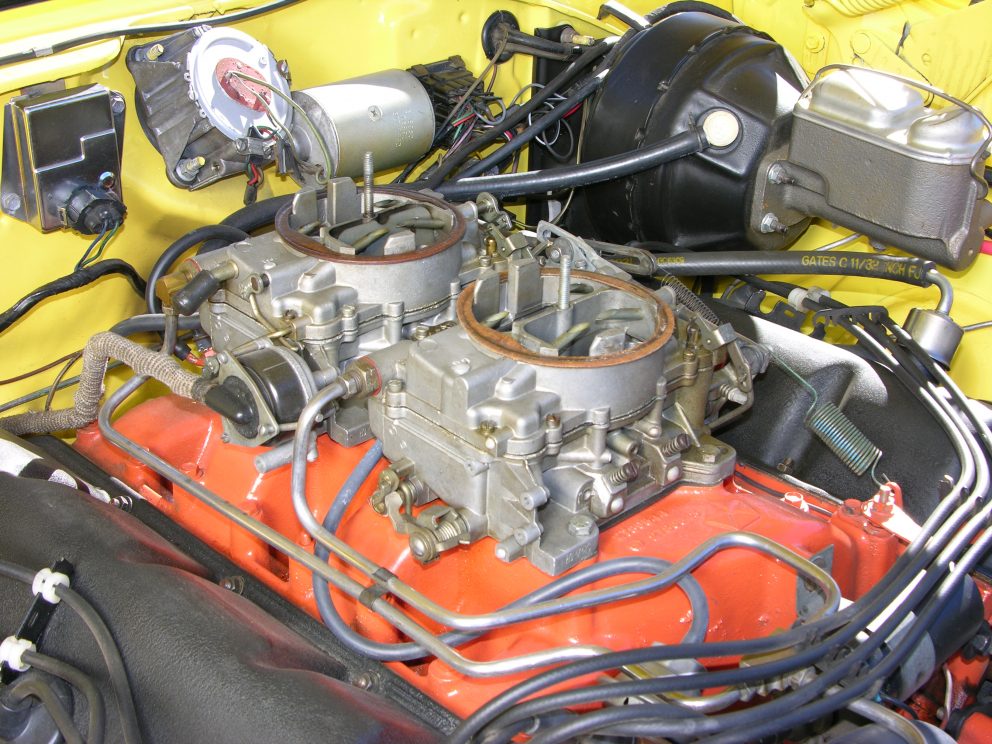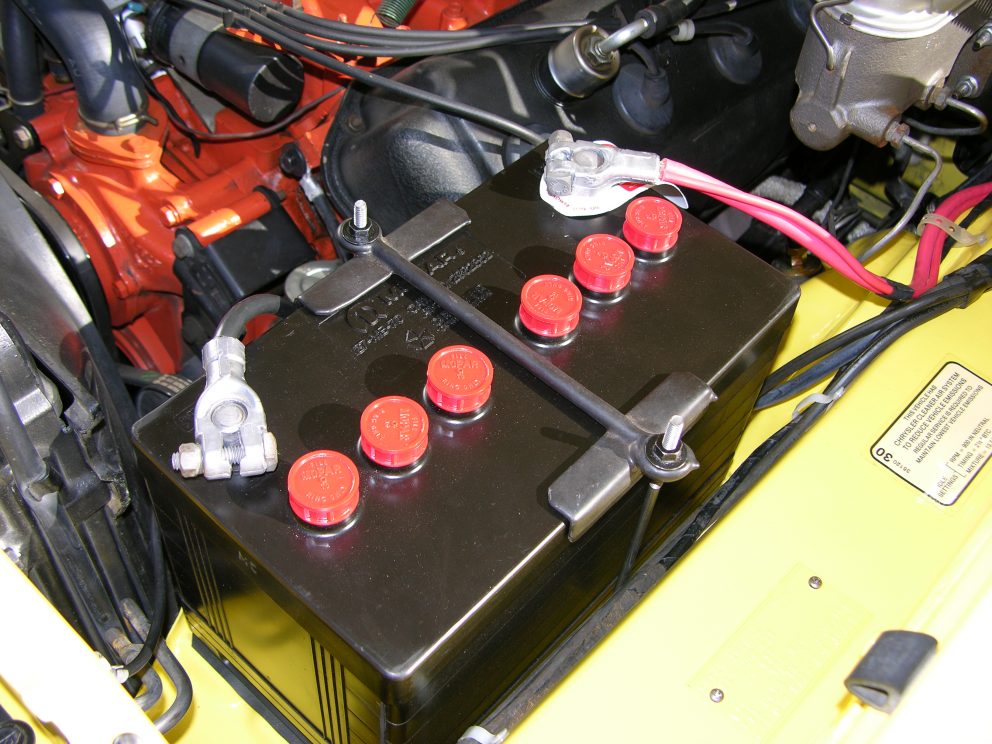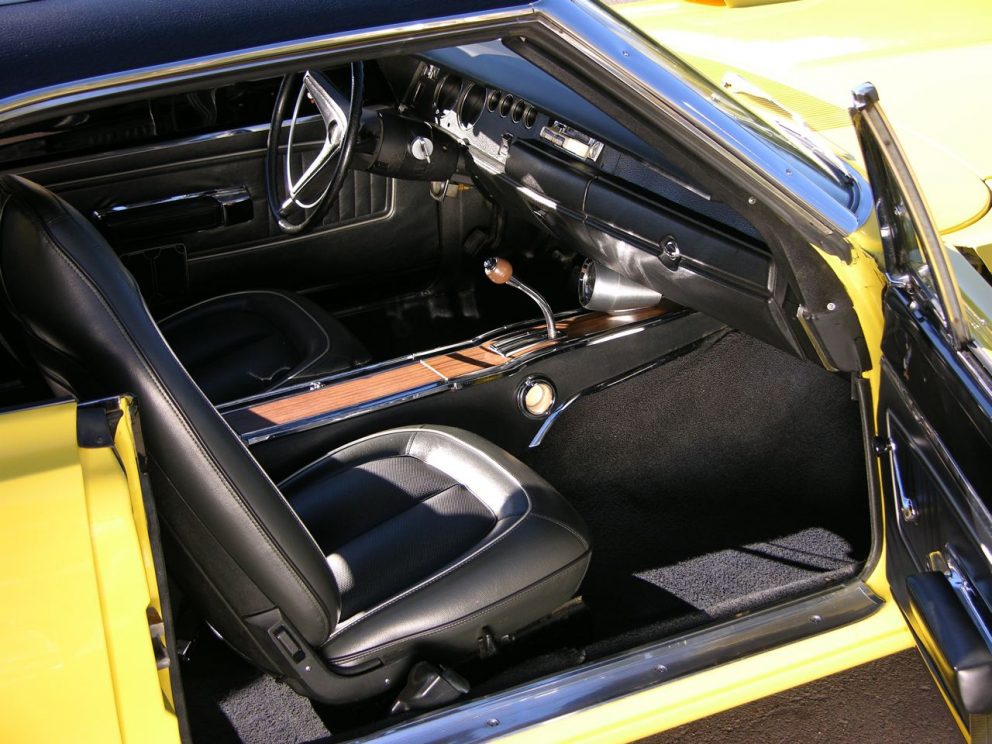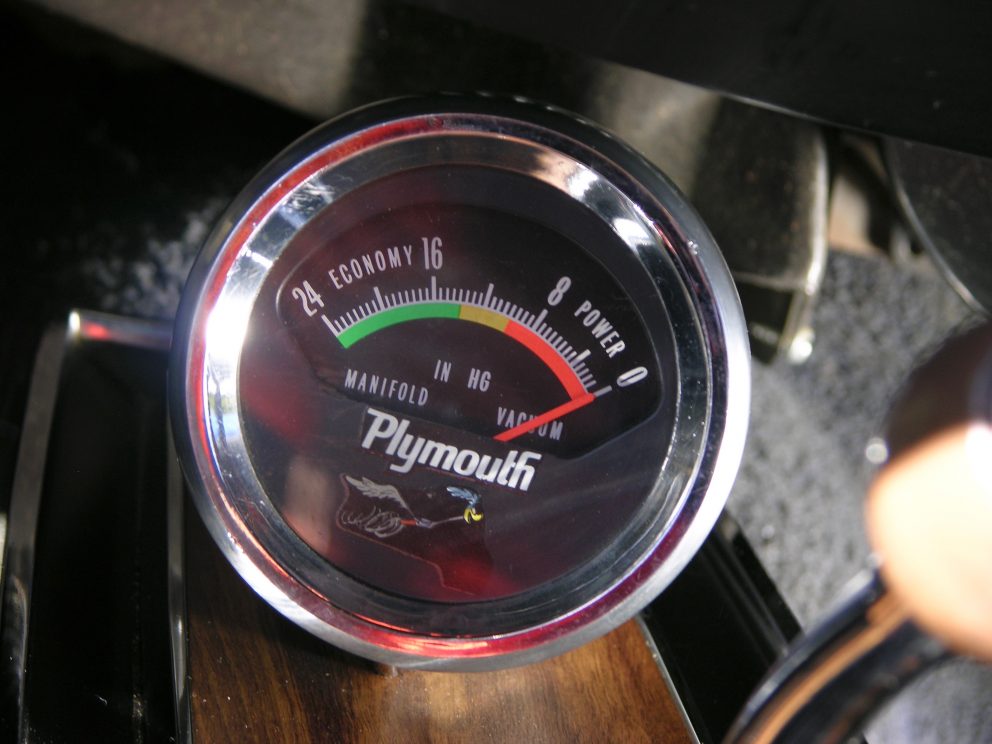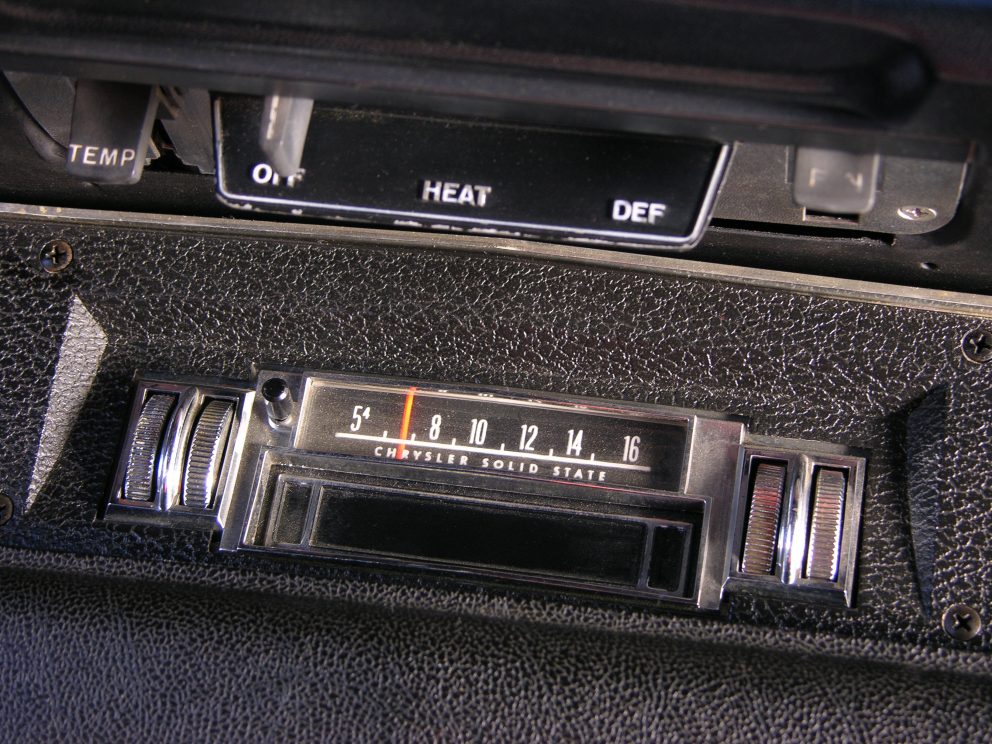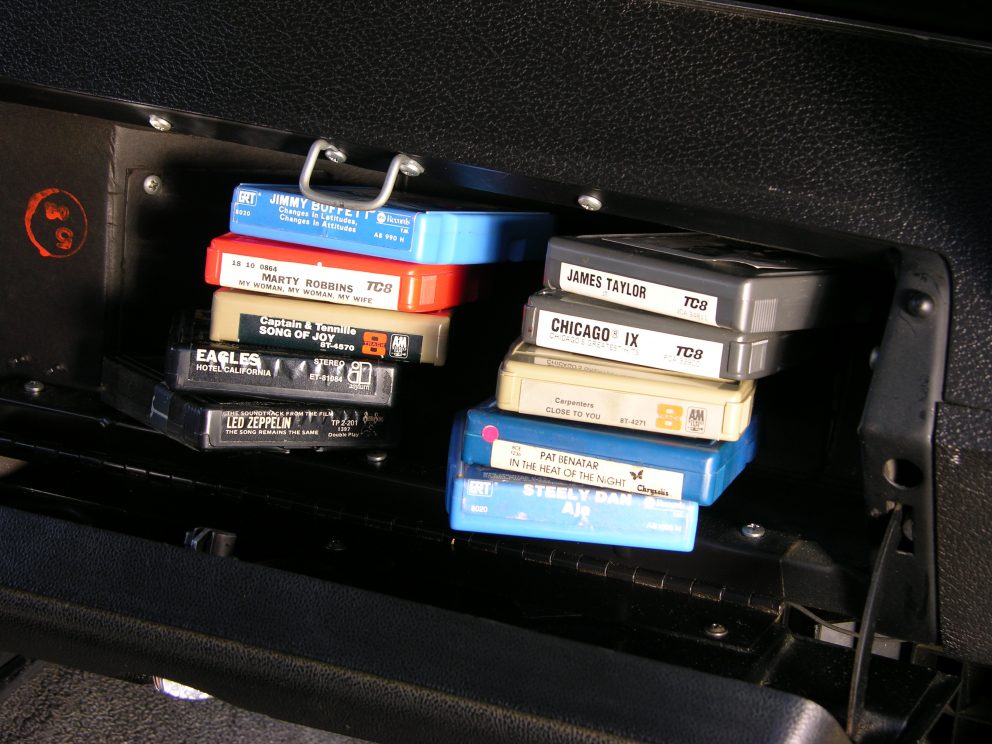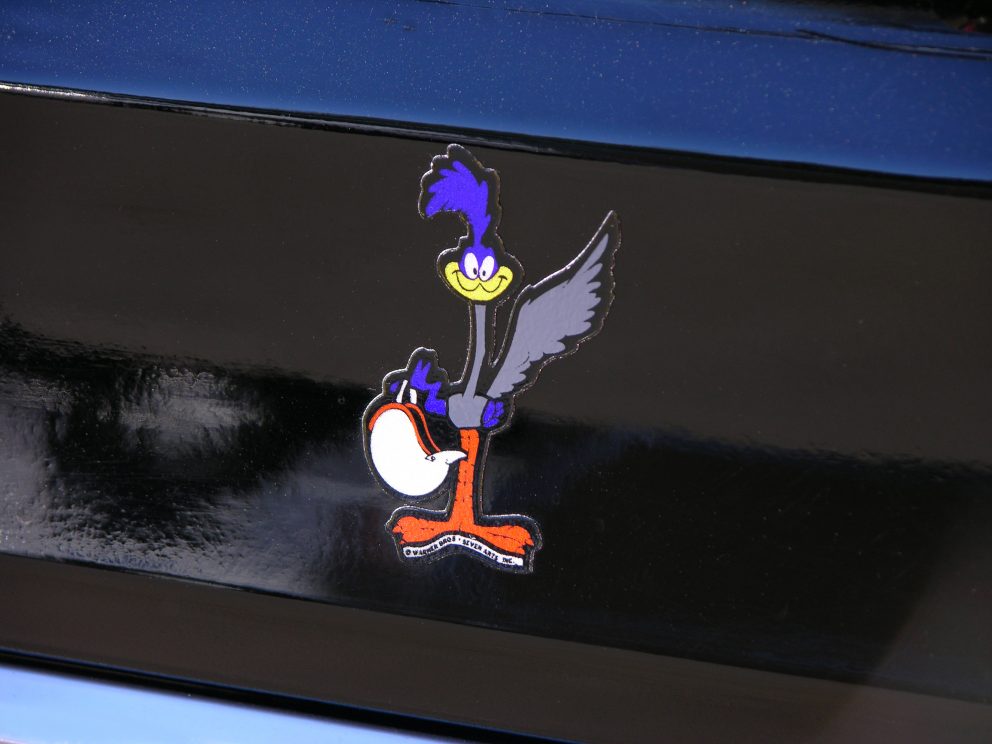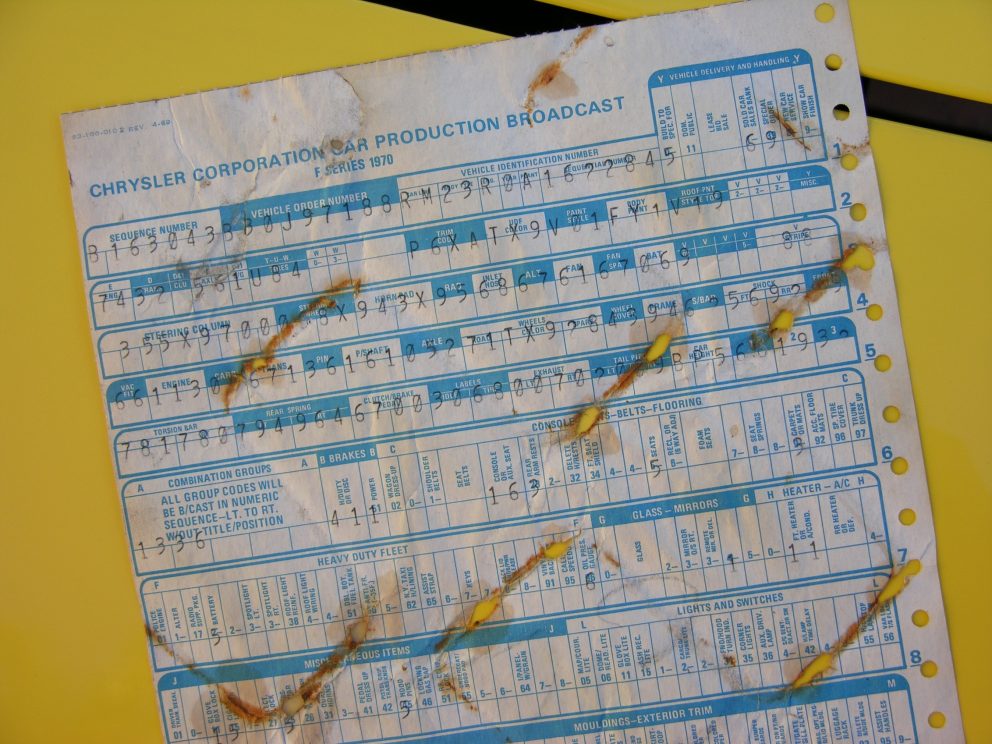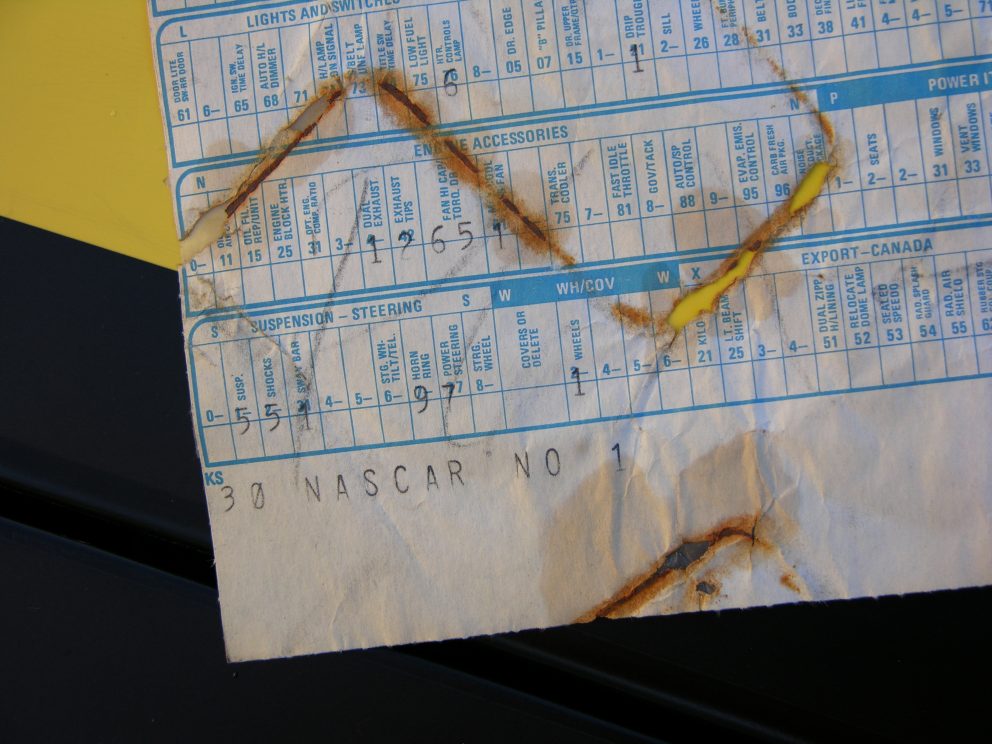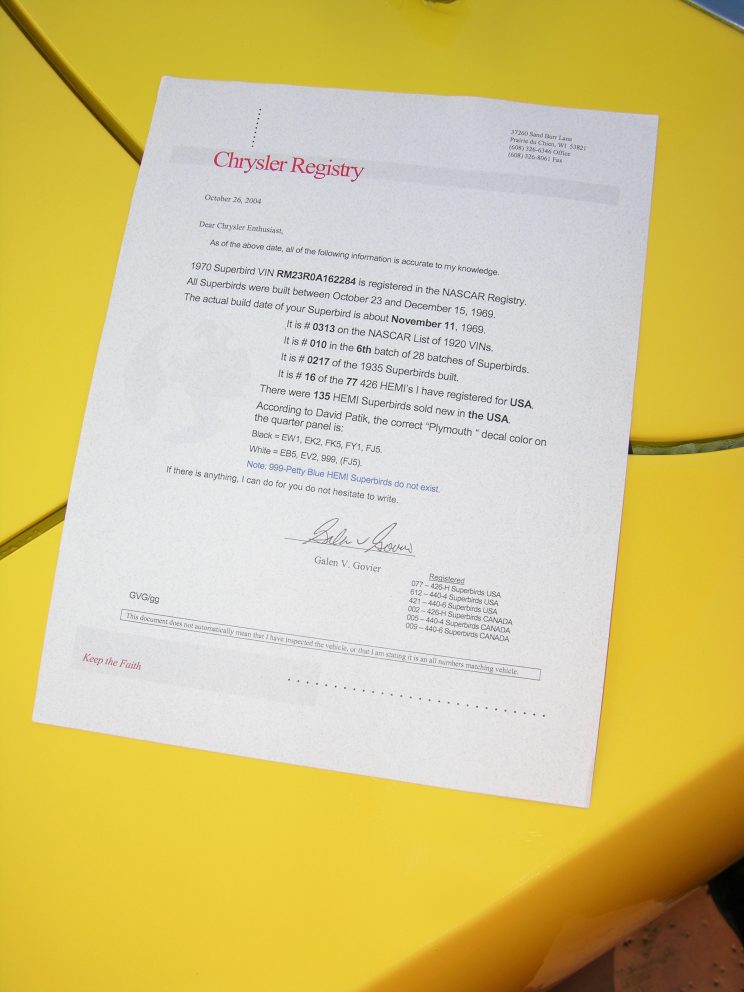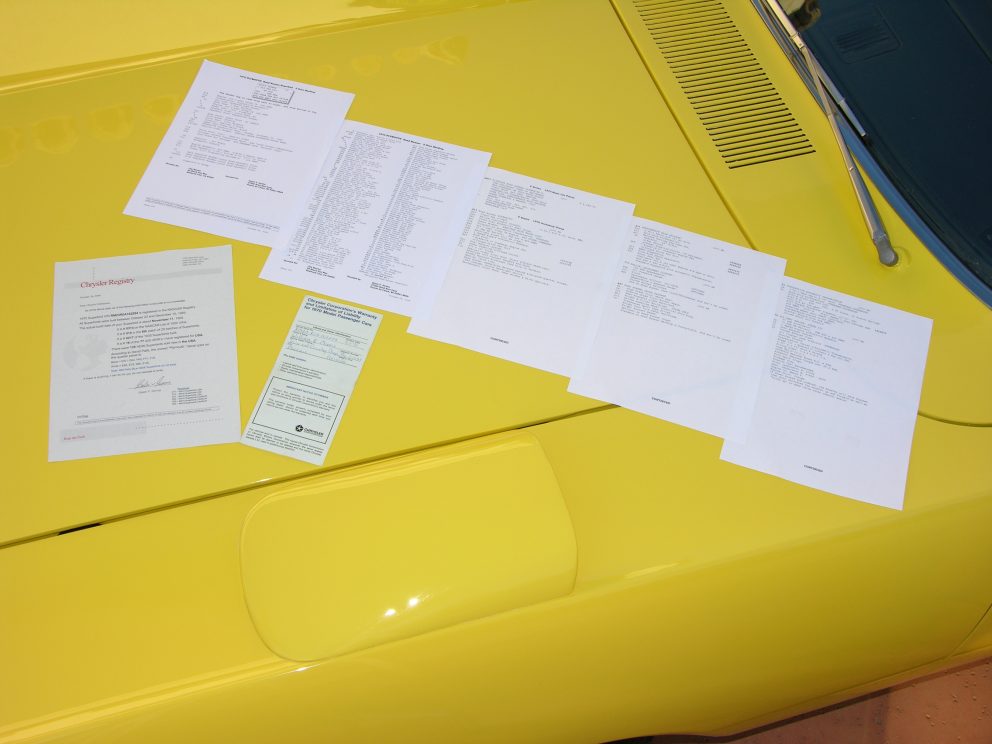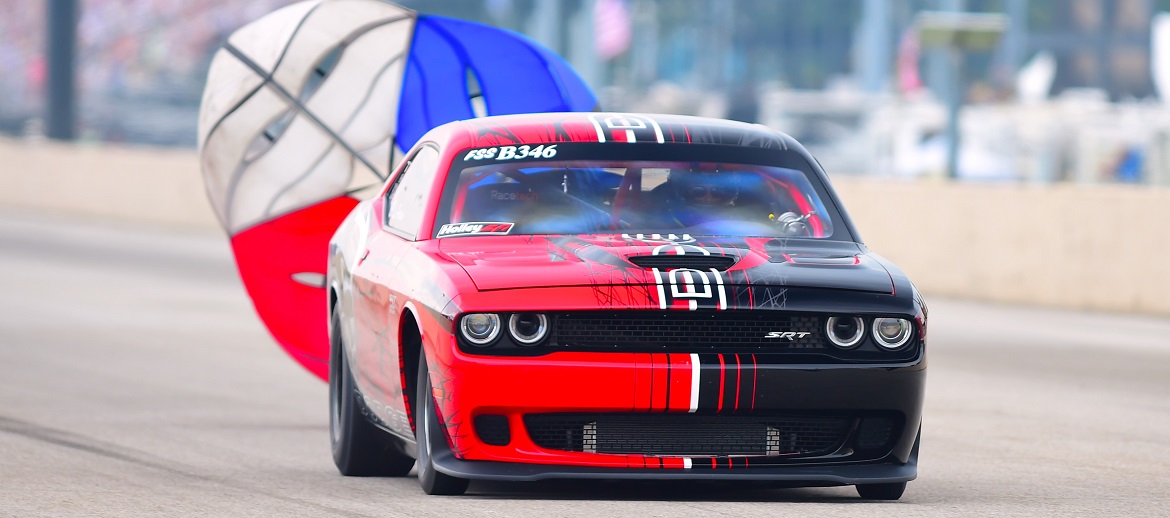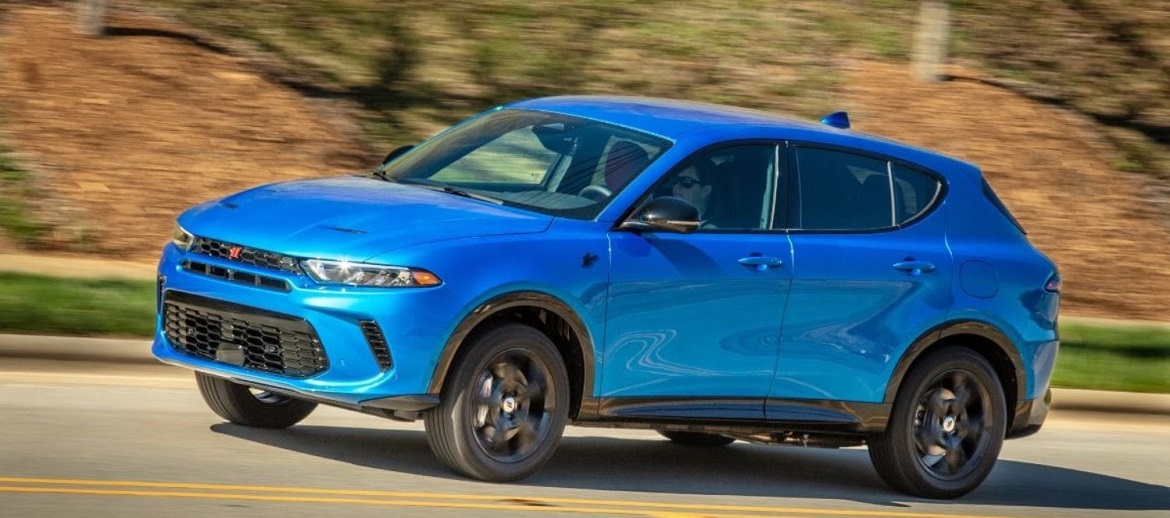Lemon Twist HEMI® Superbird!
2 years ago Heritage Video
— Developed specifically for Richard Petty’s 1970 NASCAR team
— Looks similar to 1969 Dodge Daytona, yet no body panels are interchangeable
— Production was limited to 1,935 units, 135 had HEMI® engines
How Plymouth was able to create their version of a NASCAR wing car was to use their “B-body” Road Runner shell, but add special enhancements in the way of a pair of front fenders borrowed from a 1970 Dodge Coronet, a modified Coronet hood, an 18-inch extended front nose cone (with chin spoiler), re-worked, streamlined (convex) backlight, massive 24-inch tall rear stabilizer and A-pillar aero enhancing covers.
IT WAS ALL ABOUT RICHARD PETTY
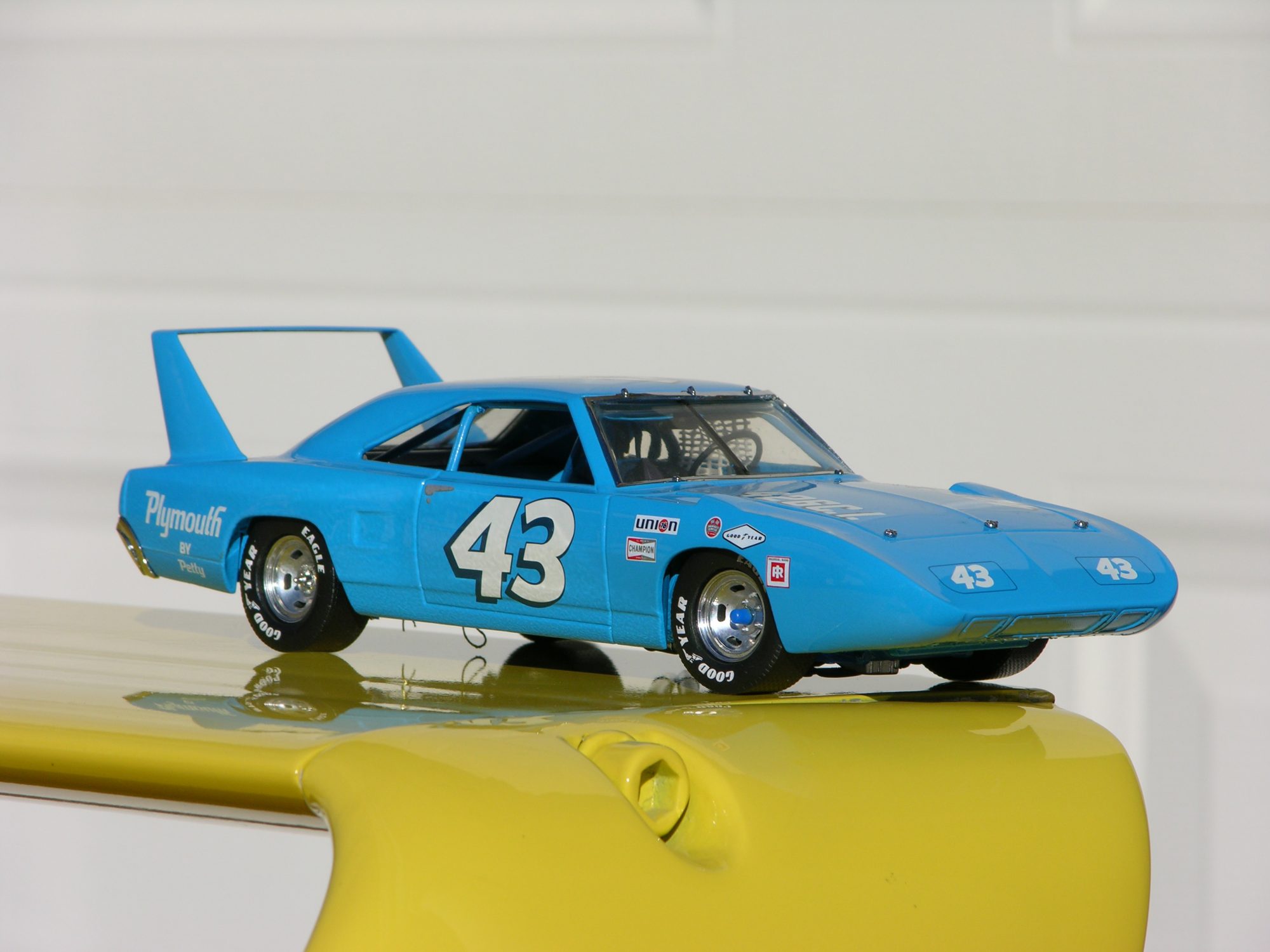
The fact is that the Plymouth Superbird in actuality was developed and built specifically for one person, and one person only: “King” Richard Petty. After a long and winning racing career with Plymouth, Richard switched to Ford for the 1969 racing season. Something had to be done to get him back, and it was the creation of the Superbird that did it! Dodge had the winged Charger Daytona in 1969, now was the time for a Plymouth wing car. If it wasn’t for Petty, the Plymouth wing car never would have happened!
Gary Romberg explained it all in the book Hemi Engines, published in 1998 from Mopar® Performance: “During this time, the Plymouth people had lost Richard Petty, and he was now doing reasonably well with Ford. Well, Plymouth had said ‘no’ to the wing car in the beginning. They didn’t want to spend the money. Meanwhile, Petty was still friendly with the Plymouth people and had said he would consider coming back if the cars were better and other things could be worked out. So Plymouth came to us in late 1968 or early 1969 while the Dodge program was going full bore, and said ‘let’s do it.’ We only had a few months to get ready.”
SUPERBIRD FOR THE STREET
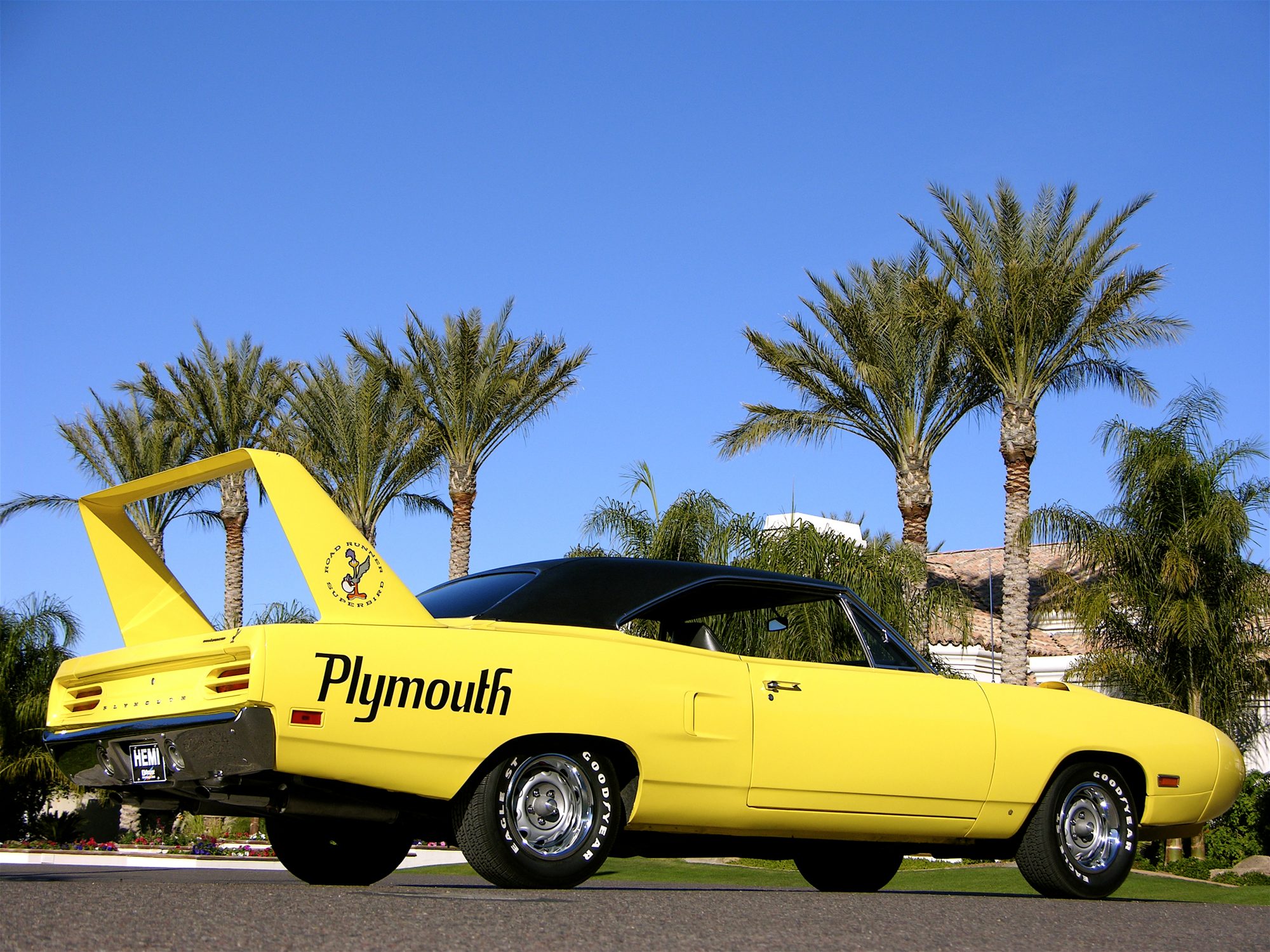
Superbirds were sent to Chrysler-Plymouth dealerships and they were particularly popular in the Southeastern states, NASCAR country. This HEMI engine-powered Superbird was sent to Town and Country Chrysler-Plymouth located in Mesa, Arizona, having a scheduled built date of November 11, 1969.
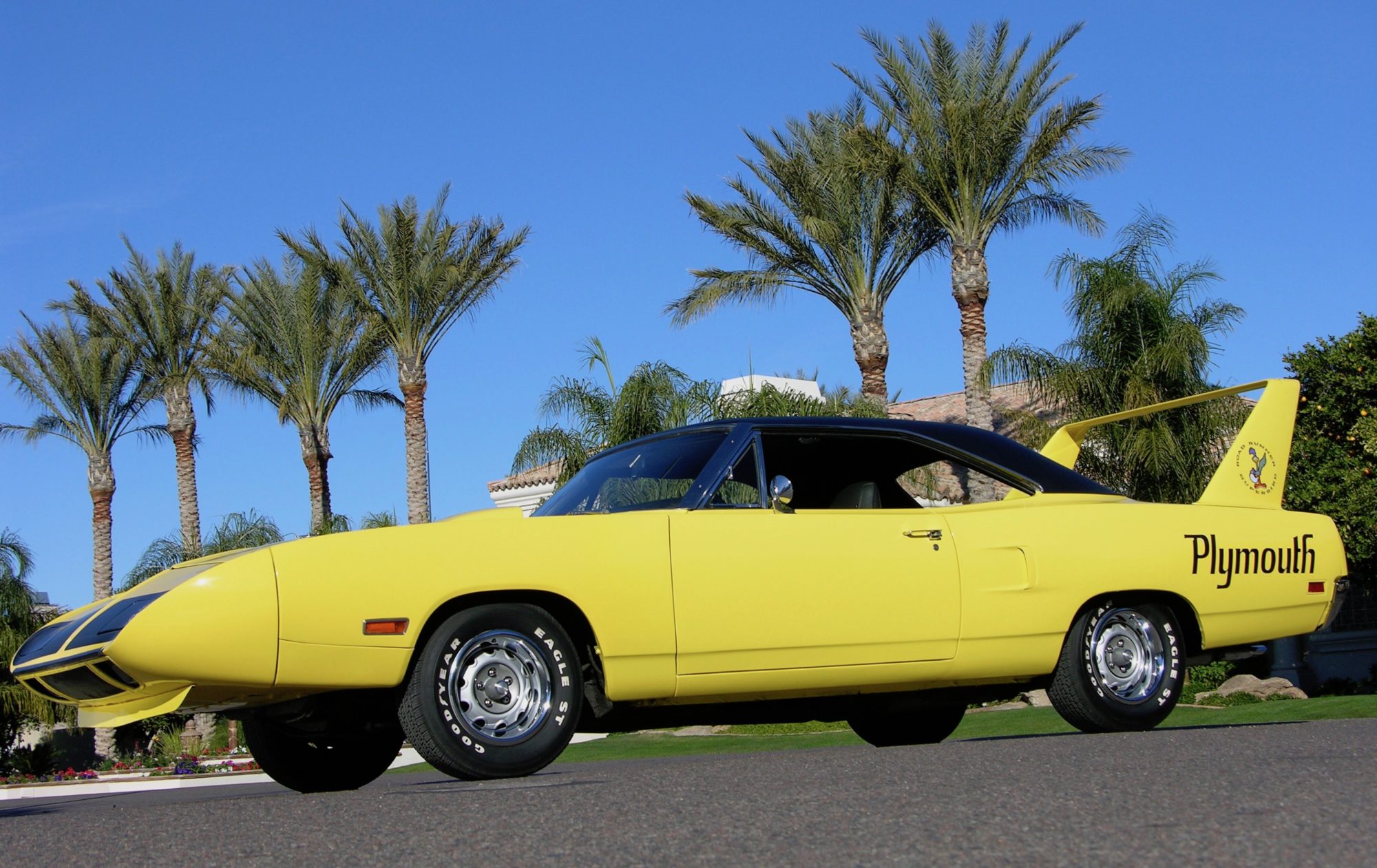
In the 1971 book Grand National, Richard Petty tells the story of Glenn White, then Plymouth’s general manager, pleading with him to come back to Plymouth. According to King Richard, White pointed out that the 3,400 Plymouth dealers across the country were flying their flags at half-mast because the Petty team is running a Ford. “We began to weaken,” said Petty, “Okay, we’re ready to come home.”
By this time, NASCAR’s Big Bill France had wised up to the use of limited-edition “aero” cars, and for 1970, any manufacturer that built a special car for use in stock car racing was required to produce a minimum supply of 1,000 examples or the equal to one-half the number of franchised dealers of the car’s make, whichever was the higher number.
In the case of Plymouth, the factory agreed to produce some 1,920 of the winged machines; however, most historians agree that the actual total number of Superbirds built was 1,935 for USA consumption. All were built prior to January 1, 1970, NASCAR’s homologate deadline, with records showing that they were built between mid-October to mid-December 1969.
SUPERBIRD: THE ULTIMATE ROAD RUNNER!
Superbirds were built at the Chrysler Lynch Road Assembly Plant in Detroit, with finish work completed at the Clairpointe Pre-Production location, located a few miles away. There, the special parts and components supplied by Creative Industries and other vendors were installed, along with the large “Plymouth” and “Road Runner Superbird” markings, plus nose decals made from lightly textured DiNoc-material. These changes made the limited-production Plymouth wing cars the ultimate Road Runners ever produced.
The Petty team came back to Plymouth mainly because of the slippery Superbird, plus as an added bonus, Petty Enterprises had become the new exclusive distributor of Chrysler competition parts for all the oval racing customers, worldwide, as part of the contract. This was a big deal for the race team as it added to their profit margin and further put them closer to the factory. It was a tremendous investment for Plymouth Division to get Petty back and there was a media frenzy that accompanied the announcement.
The factory further upped the ante by running a pair of Petty-Blue Superbirds for the 1970 NASCAR racing season, starting at the Daytona 500 in February. (Richard’s #43 car and a new #40 matching version driven by rookie Pete Hamilton.)
This two-car team paid off with resounding results early on, with Hamilton winning the Daytona 500 event, where he beat rival Ford racer David Pearson in a tight last lap duel. Hamilton was so hell-bent to win the race for Petty Enterprises (this was his very first race for the famed team) that even after the checkered flag dropped, he kept the throttle mashed to the floor for an entire extra lap at full speed just to be certain he’d be credited as the winner!
Hamilton also won the Alabama 500 and the Talladega 500, both high-profile superspeedway events, further proving the wisdom of Petty running a second team car for 1970. Richard Petty himself went on to win some 18 races that season, making it a very successful year for Plymouth on the stock car racing circuit. “If we could have, we never would have left Plymouth in the first place,” was how Richard Petty summed it up a few years back in an interview where he described the now famous wing-car era.
THE WING
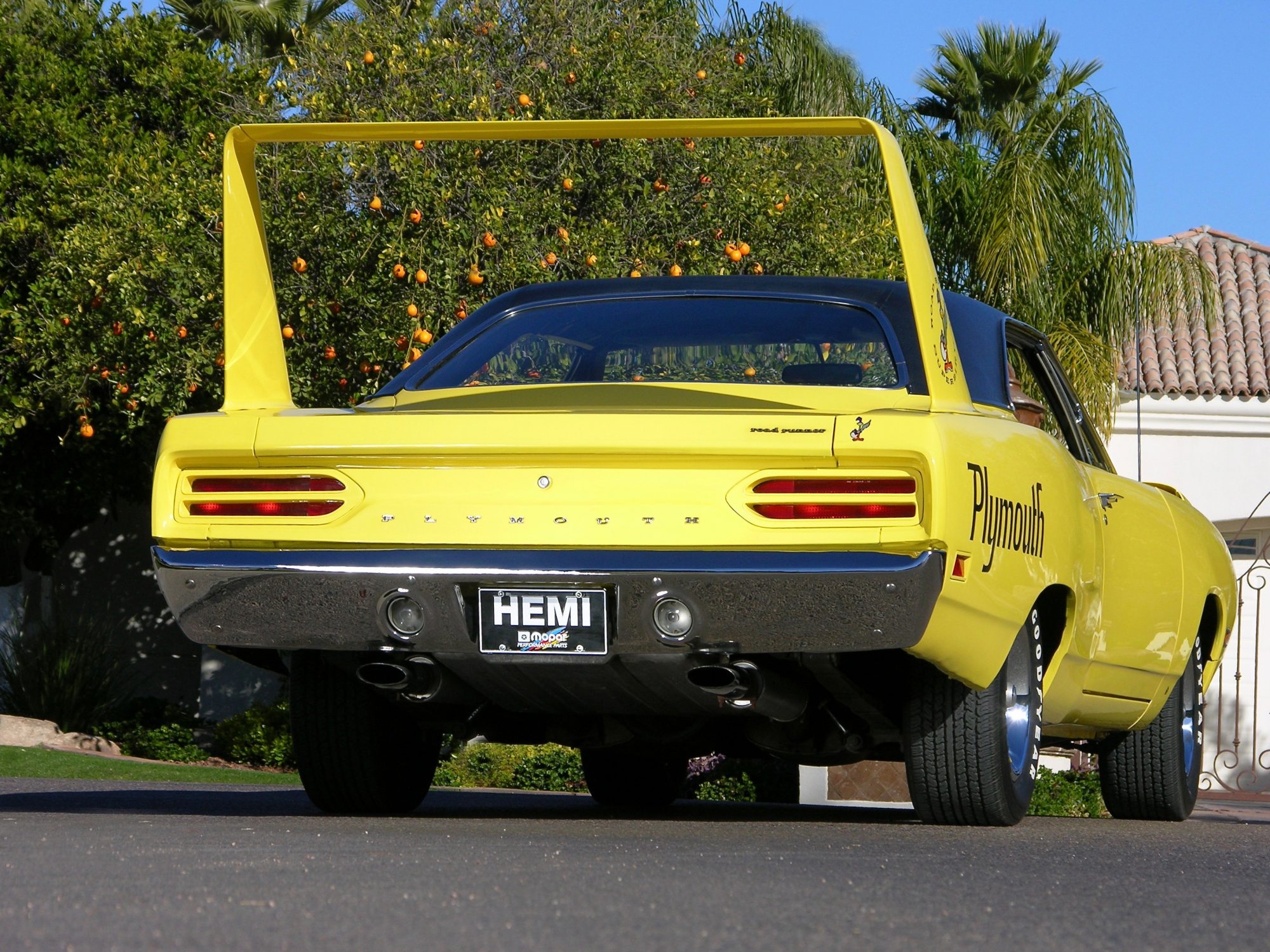
The wing is 24 inches tall and 55 1/2 inches wide, making it easy to spot in a crowded parking lot to be sure!
SUPERBIRD AERO FEATURES
To aid in cheating the wind at the NASCAR superspeedways, the aerodynamic wizards at Chrysler came up with these simple yet effective A-Pillar post coverings.
A streamlined rear window plug was added to Superbirds, and because it would be covered by a vinyl top in all instances (on production street cars), it was only rough finished using Plastisol filler material.
Inside the trunk you can see the wing support plates and truck floor brace brackets. Race applications also used cables that further anchored the wing in the event of a wreck and/or impact with the wall.
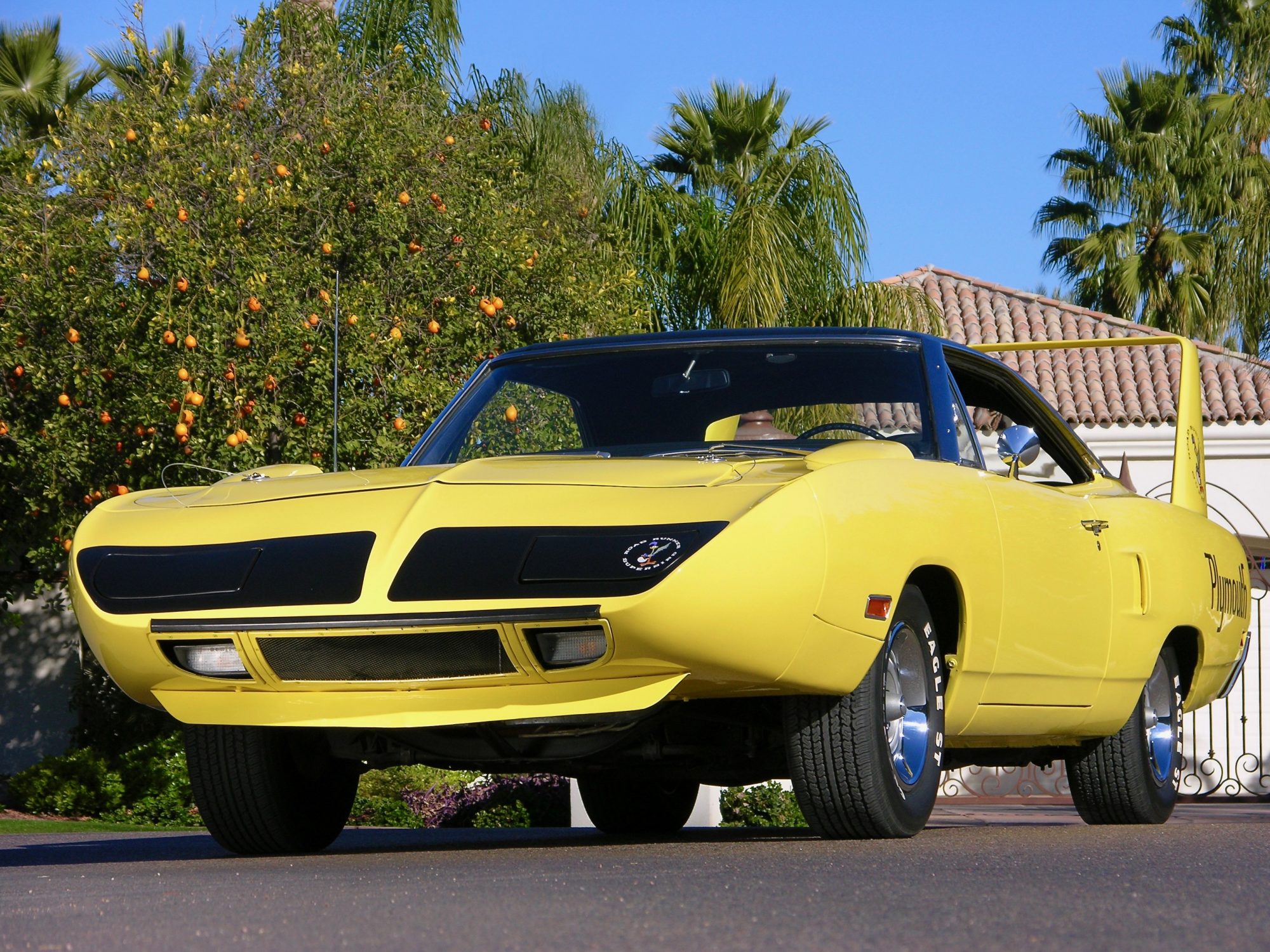
A unique design detail of the Plymouth wing car was the character line on the hood (as used on the ’70 Coronet) and the Plymouth styling department saw to it that the same character line was extended on to the nose cone. The styling people also insisted the air intake opening be located on the lower side of the snout, different as compared to the Dodge Daytona’s version. This HEMI engine-powered machine came with (C16) Wood grain Center Console, (C55) Bucket Seats, (W21) Rallye Road Wheels, (U84) F60 x 15 RWL Polyglas GT tires, (N42) Chrome Exhaust Tips and (R11) AM Solid-State Radio, which was upgraded somewhere along the line.
E74 OPTION: 426-CID HEMI
490 lb-ft of torque and 425 horsepower makes the 426 HEMI engine a potent performer on the boulevards. This one has all the right O.E. (original equipment) touches, including correct hoses, clams, plug wires and engine paint color.
Twin Carter AFB four barrels were standard equipment on Street HEMI engines; this car as equipped with TorqueFlite® transmission has model #4742S (front) and model #4746S (rear).
Standard issue on the HEMI Superbird was the 70-amp Series 27 Mopar battery.
INTERIOR HIGHLIGHTS
A bucket seat car, the factory console was fitted with a “Plymouth Road Runner”-labeled Engine Economy Gauge, and it is believed to have been a dealer-installed item after the car was delivered to the Mesa, Arizona, dealership.
The (R22) Solid-State AM / Tape Player … complete with retro 8-tracks in the glove box, got to have tunes!
Warner Bros Seven Arts, Inc. Road Runner stickers were adorned to the upper steel sections of the doors.
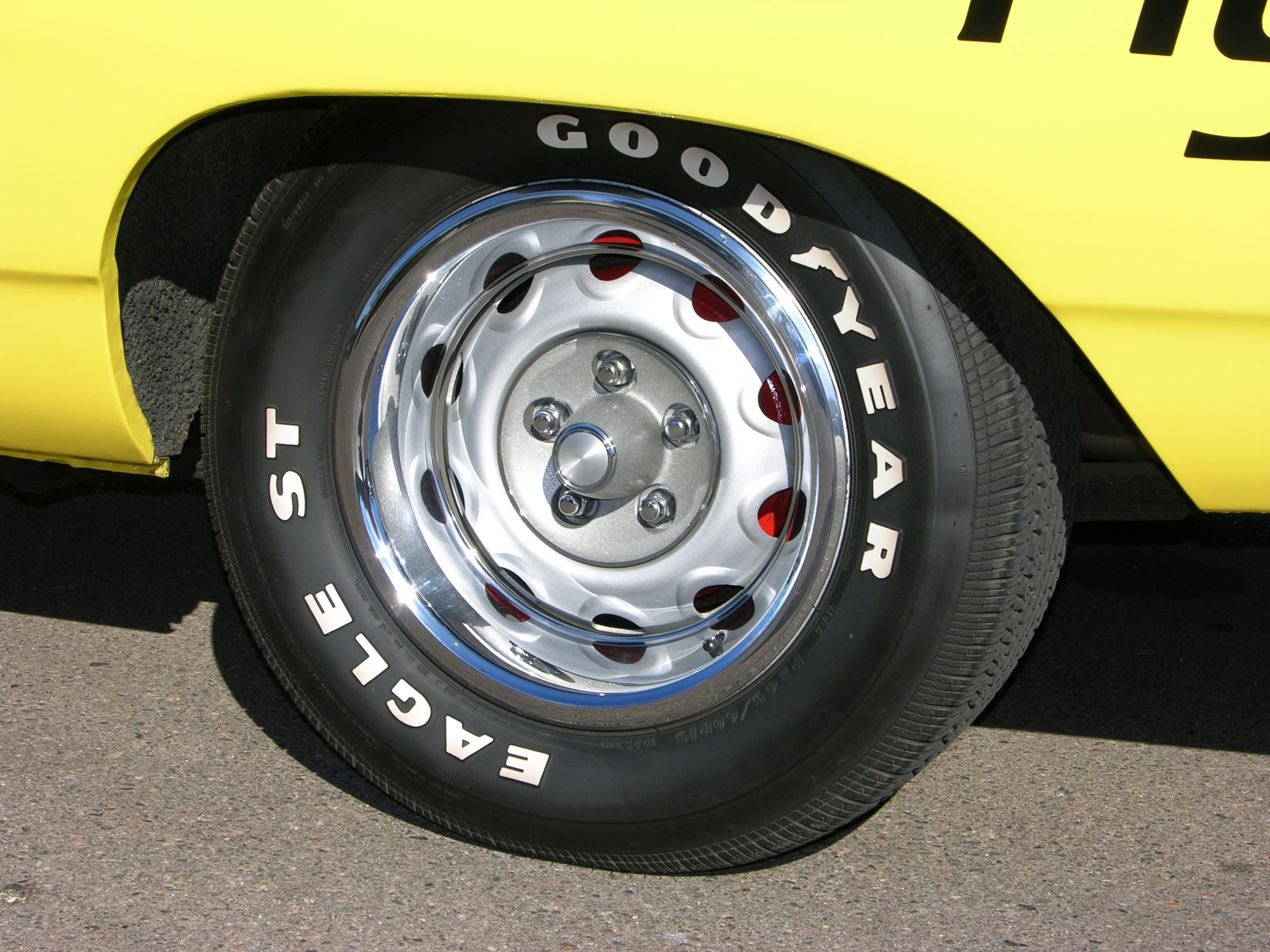
Rallye wheels and a set of F60x15 Polyglas GTs were what this car rolled out of the factory with, and it’s fitted with some in modern radial rubber in the way of a set of Eagle STs, sized P245/60R15 for street driving. Those 10-inch rear drums were painted red from the factory, some subtle “bling” as part of the package.
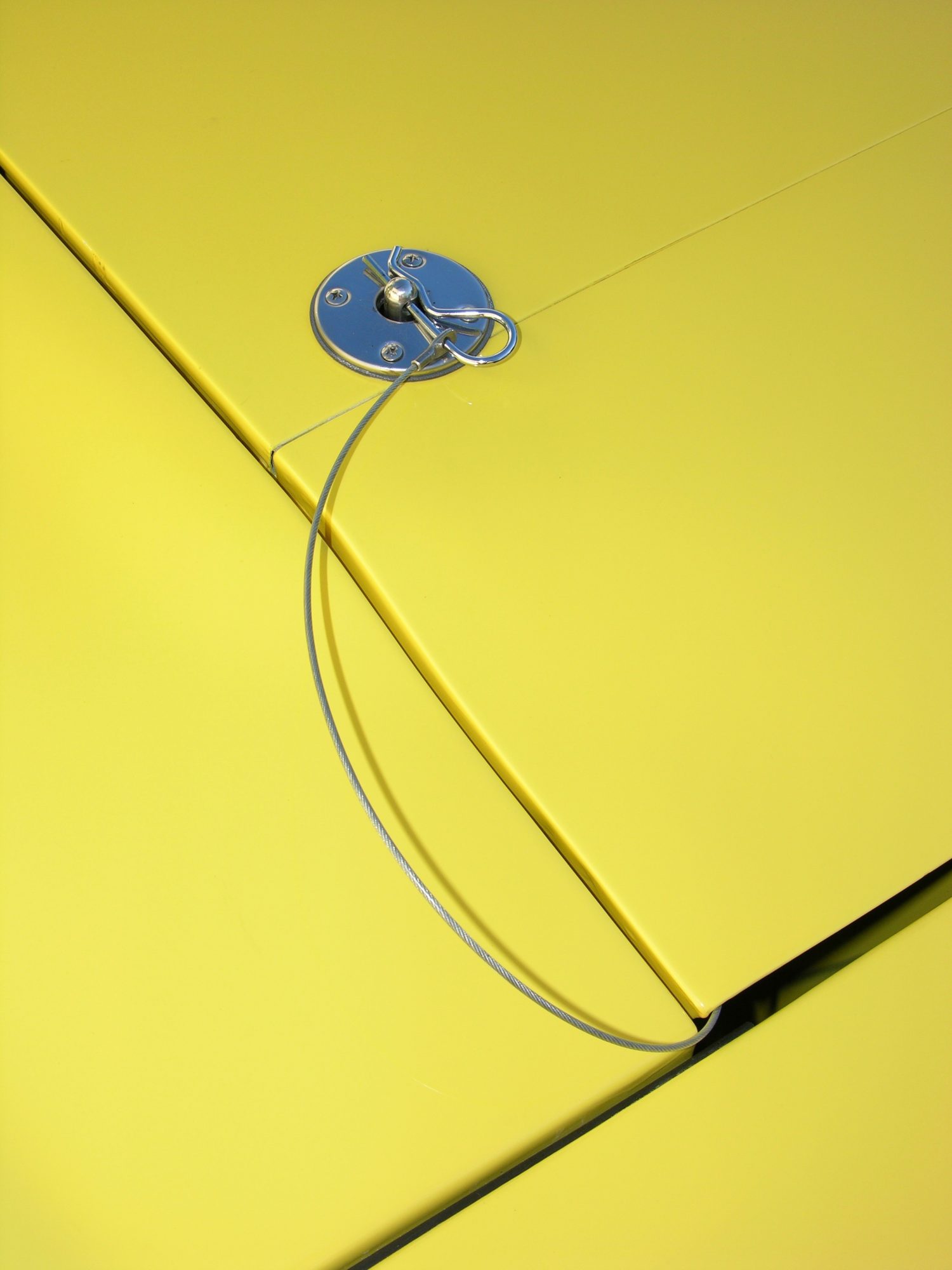
A pair of (J45) Hold-Down Pins were standard on all Superbirds.
BEEP BEEP: THE VOICE OF THE ROAD RUNNER!
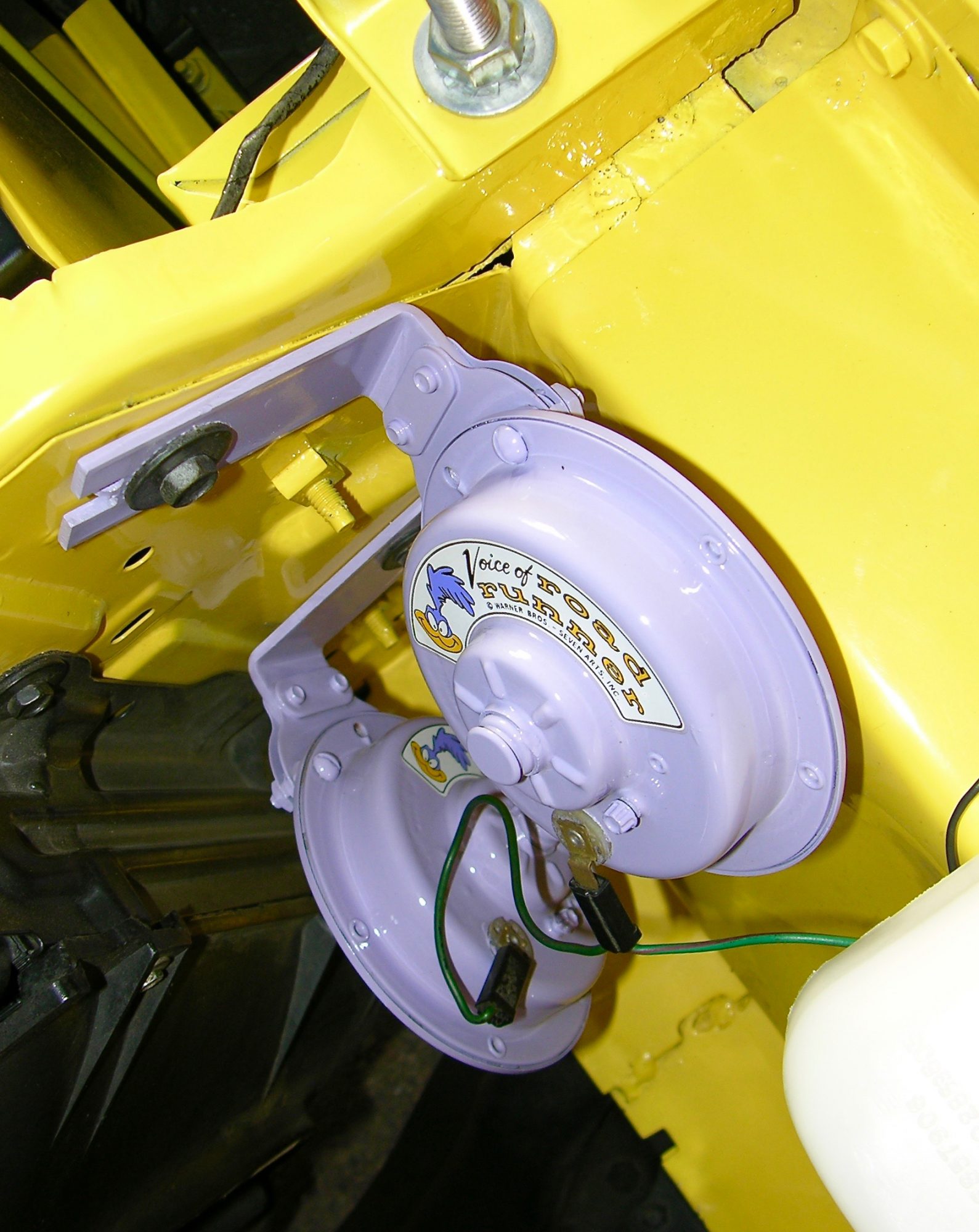
Plymouth had some fun with the horns on these cars, and the “voice” of the Road Runner comes from these purple-painted horns that were “tuned” to replicated the Warner Bros. cartoon character.
BROADCAST SHEET
Broadcast sheets typically are found under springs of the rear seat cushion, passenger’s side. That’s the reason for the partial grid pattern worn into the paper. This one calls out VIN: RM23ROA162284, the important letter is “R” which signifies it came from the factory with the 426 HEMI powerplant. “30 NASCAR NO 1” stamped on bottom left to advise assembly line workers that this car is to be converted into a Superbird.
FULLY DOCUMENTED
This car is registered in the NASCAR Registry and was fully decoded by Galen Govier, who is considered the acknowledged authority in all things regarding Chrysler muscle car VIN, fender tag and Broadcast Sheet related.
SUPERBIRD SPECIFICS
Body Type Code: RM23, Manufacturer’s Suggested Retail Price: $4,298.00 Standard Equipment: Power Steering, Power Disc Brakes, Vinyl Roof (Black Only), Hood Hold Down Pins, A33 Track Pak, 4-Speed Manual applications; A36 Performance Axle Package, TorqueFlite Applications.
Seat Availability Limited to Black or White Bench or Bucket Seats.
Standard Engine: GTX 440-cid V-8
Optional Engines: (E87) 440 6BBL, $119.05, (E74) HEMI (less Air Grabber) $648.25.
Color Availability: Alpine White, Vitamin C Orange, Lemon Twist, Lime Light, Blue Fire Metallic, Tor-Red and Corporate Blue only.
The following Road Runner options were NOT available on Superbird models: (A01) Light Package, (A04) Basic Group, (A35) Trailer Towing Package, (L42) Headlights Time Delay, (H51) Air Conditioning, (H31) Rear Window Defogger, (M25) Sill Moldings, (V21) Performance Hood Paint, (A31-A32-A34) Axle Packages, (D91) Sure Grip Differential, (N96) Air Grabber and (R31) Rear Seat Speaker.
Here’s the video of a Petty Team Car in all its glory winning 1970 NASCAR 12th Annual Daytona 500:
Author: James Maxwell
